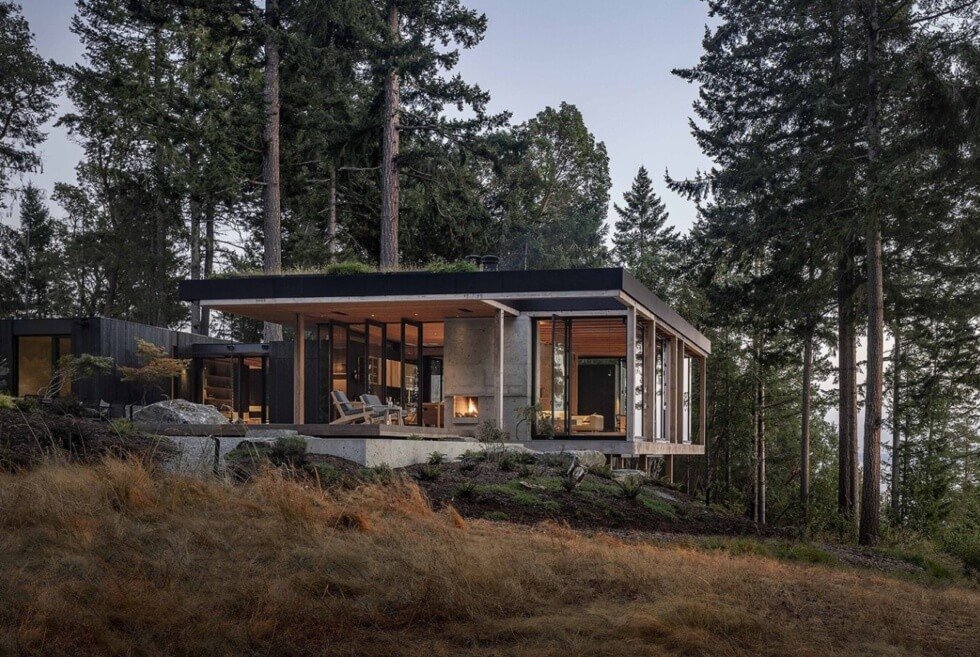Architecture studio Mwworks designed the Longbranch House in the Key Peninsula in Washington State to seamlessly blend with its wooded terrain, per the clients’ request. This involves constructing the home without disrupting the surroundings, where towering fir trees abound, and creating a harmonious connection with the landscape.
To do this, the team opted to build the house on carefully positioned pin piles and grade beams, leaving the roots of the fir trees undisturbed. They also incorporated plants on the roof to form a sense of continuity with the surrounding meadows. The planted roof also conceals the home from the road, where a gravel driveway leads to an unassuming barn and finally to the house, where it remains concealed at the very last moment.
Longbranch House then allows the natural landscape to take center stage, from the exterior to the interior design elements. A wooden bridge leads to the entrance where fir trees serve as pillars. Inside, the open floor plan frames landscape vista, with unobstructed views of the surrounding meadows and the Case Inlet beyond.
Moreover, the materials used throughout the house mimics the natural surroundings. These include a cast of rough concrete mix for the home’s structure, as well as on the flooring and the walls, and dark-stained cedar cladding in some areas. Meanwhile, exposed Douglas Fir beams in the living space create a spacious pavilion-like feel and well-placed glazing are delicately framed to minimize visual impact while seamlessly connecting indoors and outdoors.
The bathroom in Longbranch House even looks out to the meadows and large glass windows flanking the primary suit offer a serene view of the landscape. “Each room offers its own connection to the landscape, sometimes intimate in scale, sometimes expansive,” says Mwworks. The home was constructed on a once-fragmented land nearby a beach cabin where the clients frequently visited for 35 years.
Learn More Here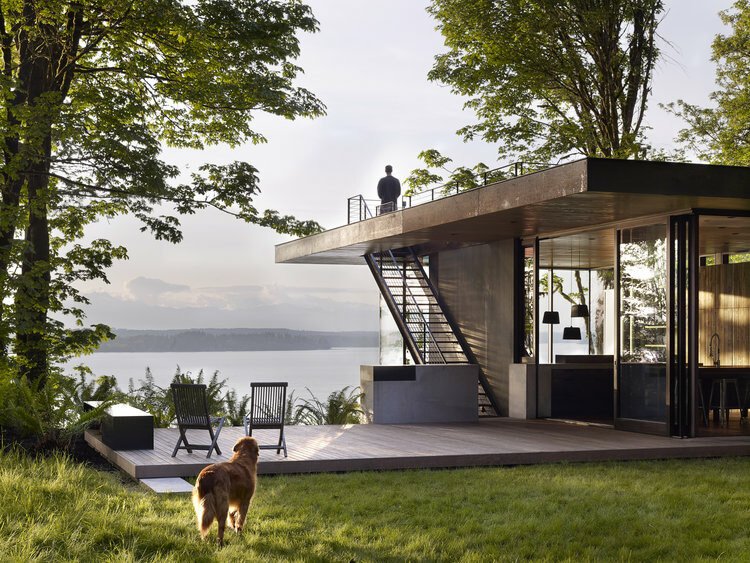
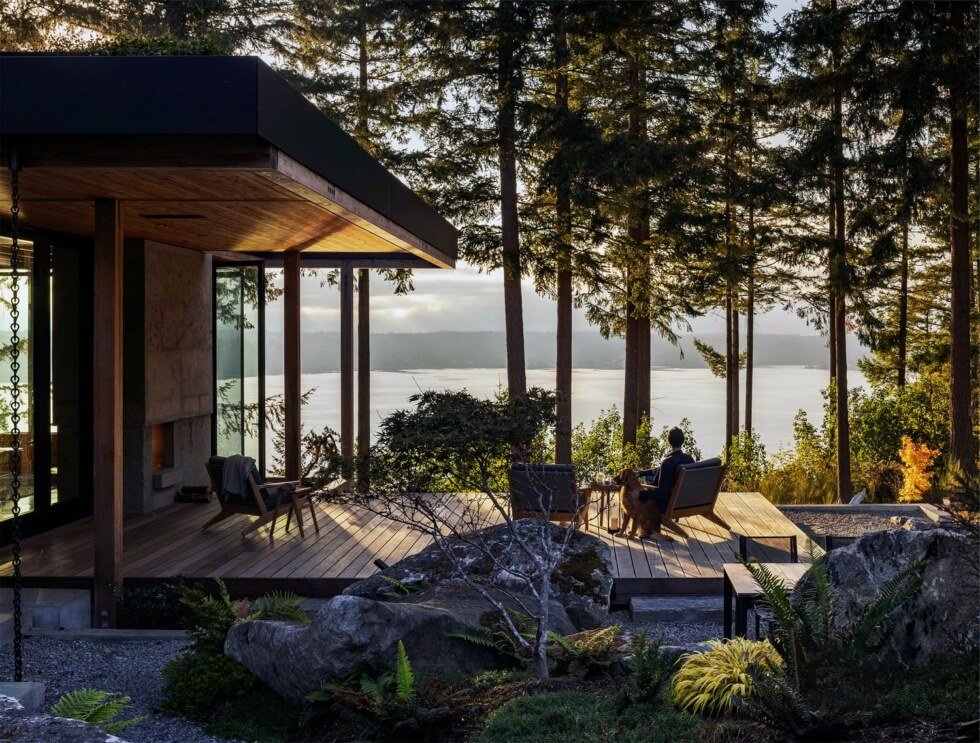
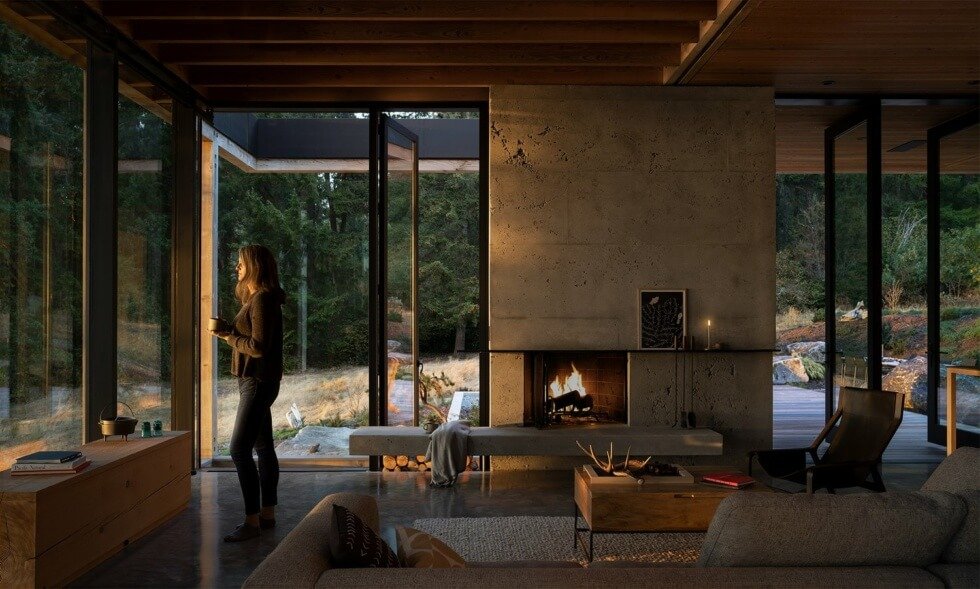
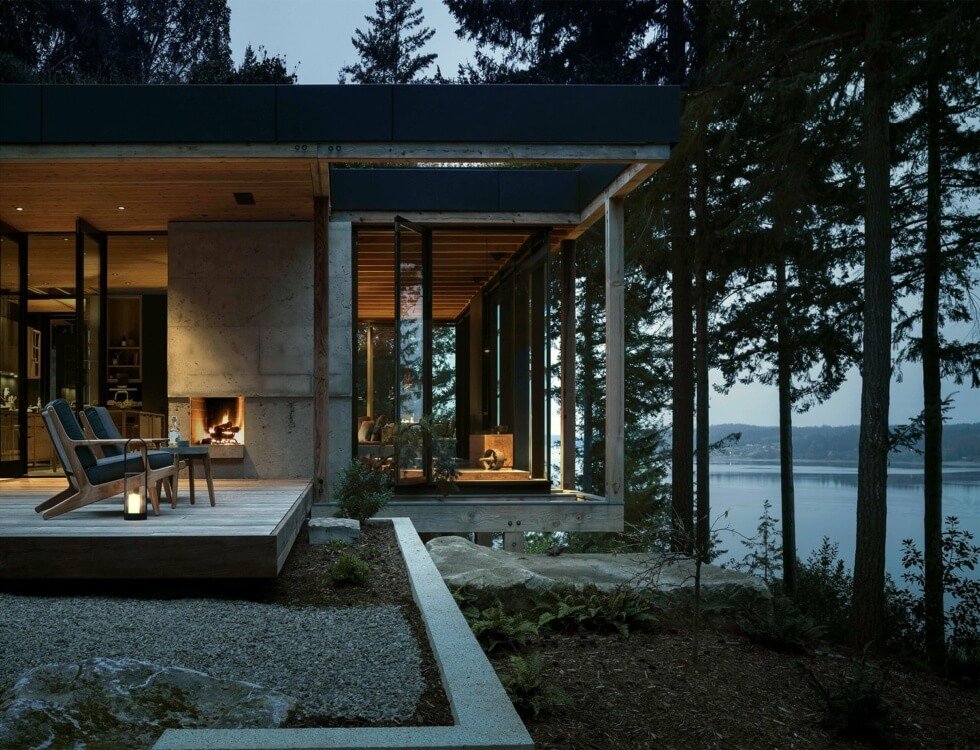
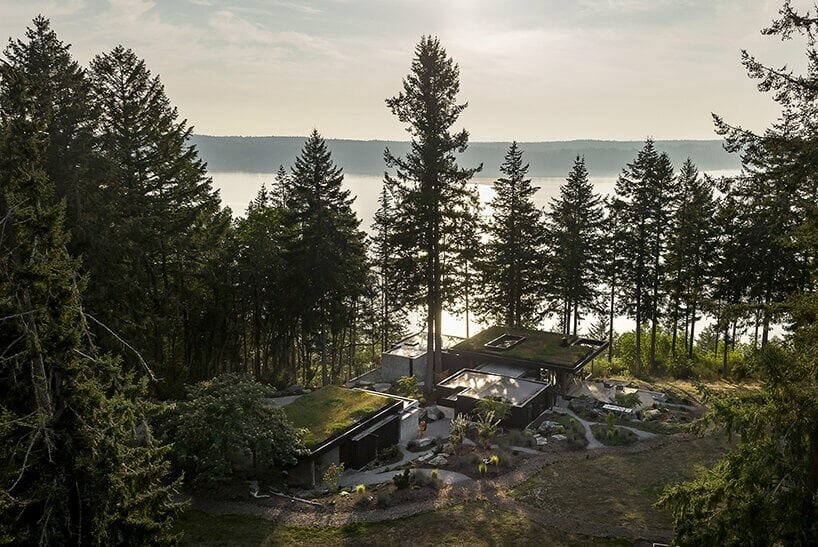
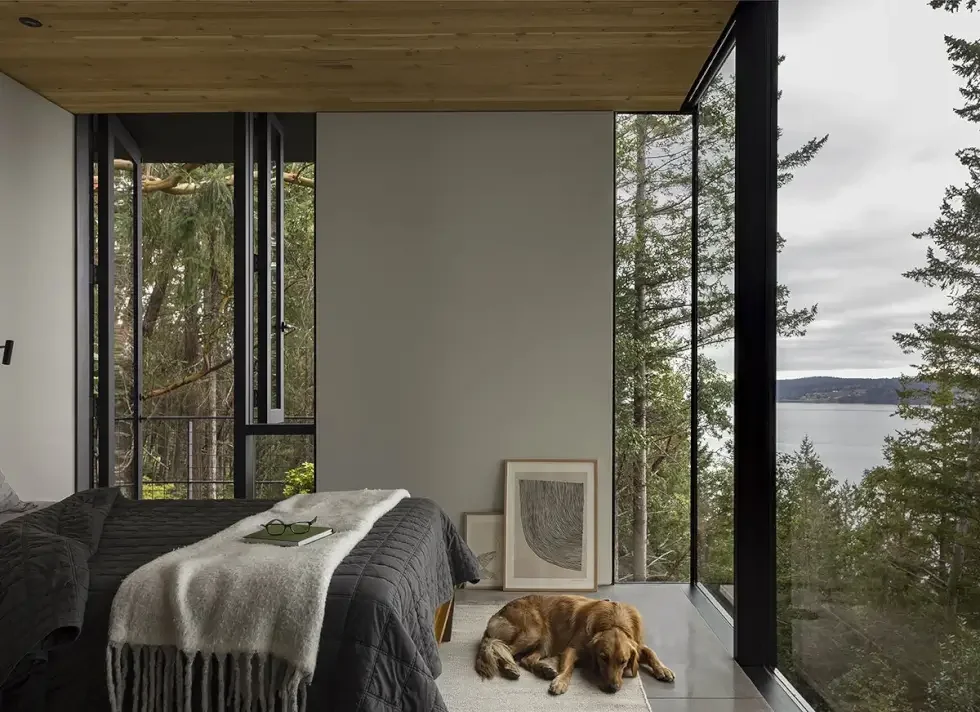


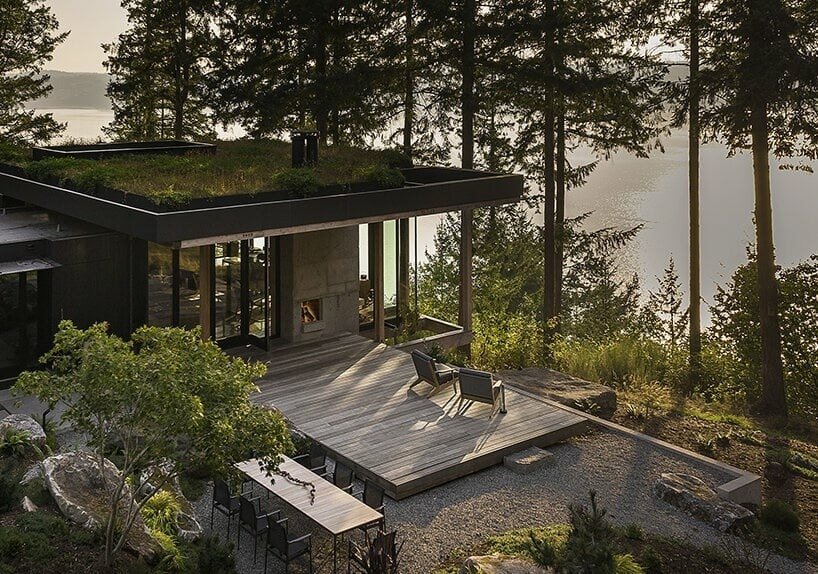
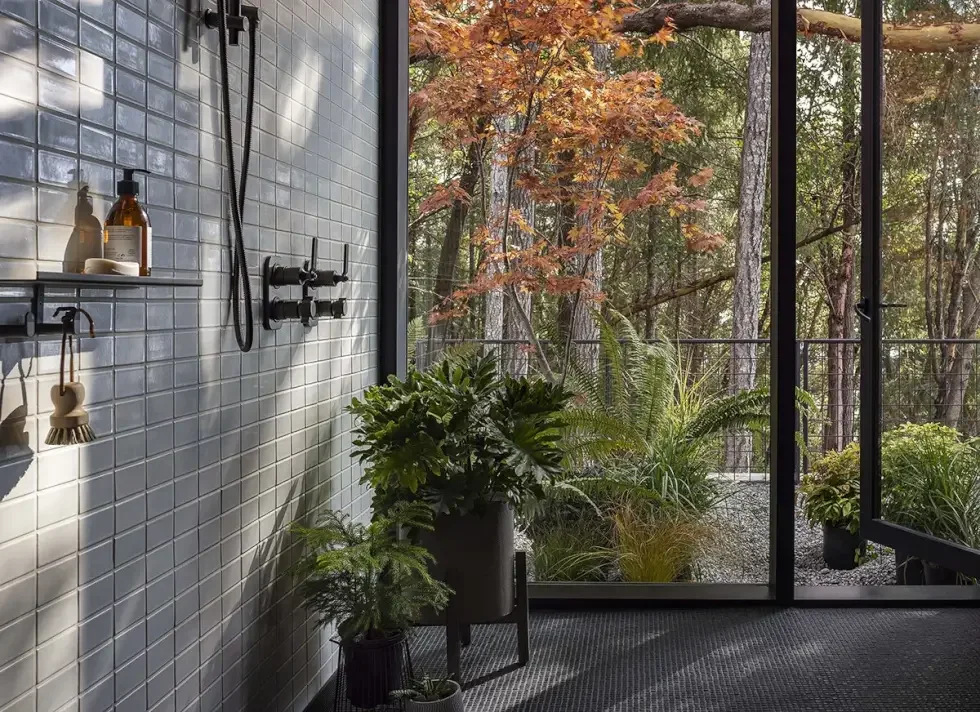
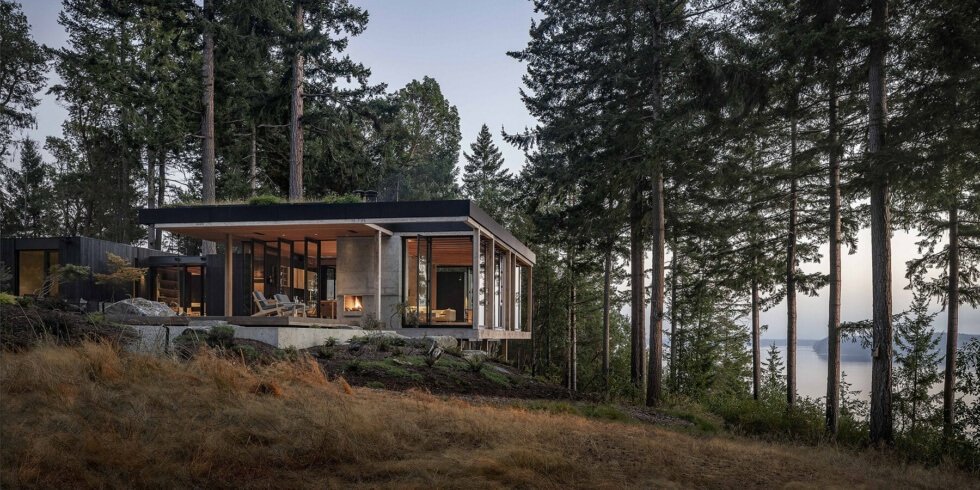
Images courtesy of Mwworks

